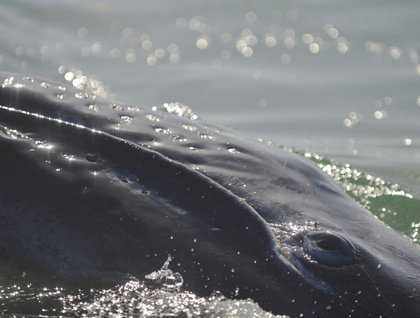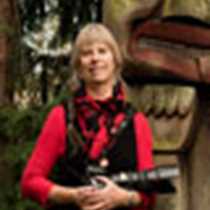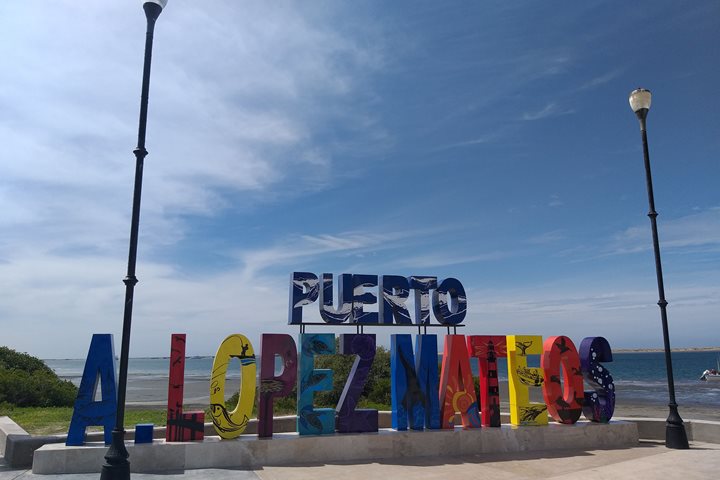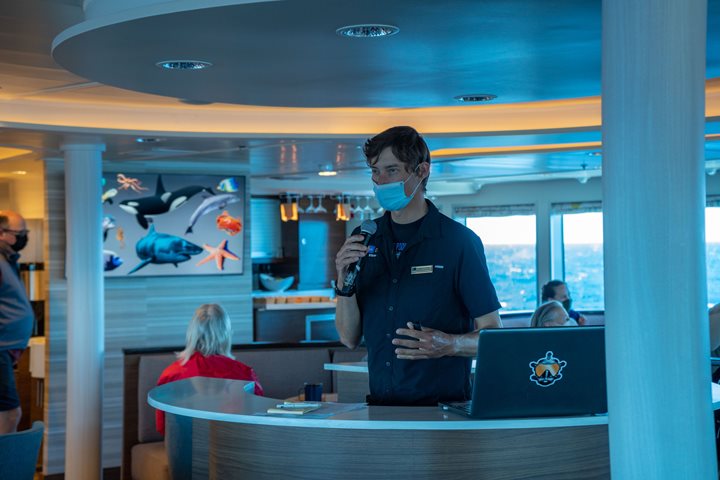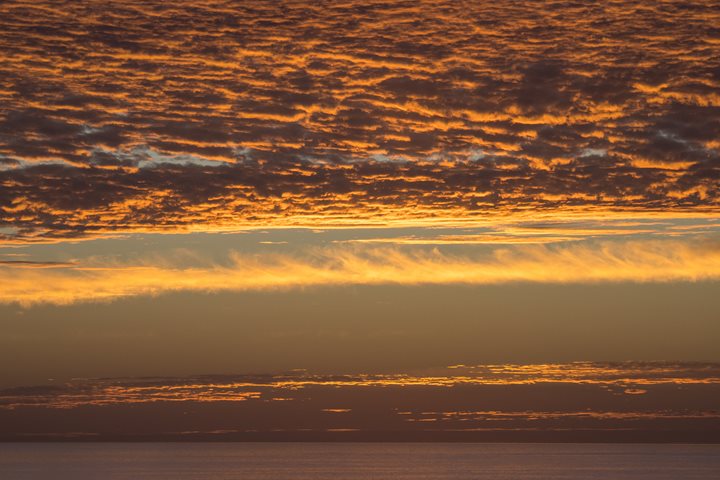An early wake-up call found the National Geographic Sea Bird at anchor in Boca de Soledad in the northern end of Bahia Magdalena. We were scheduled to begin our whale watching at 7:30 a.m. The morning temperatures were cool and the customary morning fog that often decorates the coastal lagoons of the western side of the Baja peninsula hung like a thick blanket over the water.
GPSs were given to each driver and slowly, very slowly, we began a passage into the ever-moving grey and veiled landscape. As our Zodiacs continued some drivers slowed enough to be completely still in the tidal waters and listened: a blow, and then another, and our world where sight was limited became one of a cacophony of muted sounds. The distant surf, a soft bird call, then some distance away, one blow then a shorter softer one...the rising of a cow/calf pair of California grey whales moving in the calm waters of the Boca de Soledad.
The morning whale watching became rides based on sound, not sight, as the fog continued to blanket the water. Occasionally, there would be light coming from the east and very soon the morning sun burned through some of the fog creating backlit birds, whale backs and Zodiacs. We continued our quiet rides finding our way toward several adult whales moving through the fog banks and time and again, the sound of a large blow followed by a smaller blow would draw us in for a glimpse of yet another cow/calf pair of Grey whales.
The entire morning was given to whale watching in Boca de Soledad. As the fog lifted and sun poured over the water from the east more and more whales became visible. We were once again in whale soup! Cow/calf pairs could be seen in every direction. The whales moved in a very relaxed manner, not too fast, not too slow, surfacing, diving, spy-hopping, and continuing their day in the protected nursery waters of northern Boca de Soledad.
Once the entire ship had taken the time in Zodiacs to whale watch and then returned, preparations were made for our exit from the northern waters of Bahia Magdalena. We retraced our journey south through the Hull Canal, slowing for many, many grey whales, and continued until we reached the larger part of Bahia Magdalena within sight of both Isla Magdalena and Isla Margarita, and the entrance (or in our case exit) between those islands called La Entrada. Here the National Geographic Sea Bird made a long pronounced right turn heading west into the Pacific Ocean. We were still seeing grey whale blows, occasional bottle nose dolphins and a myriad of sea birds as we continued west for the next hour.
Just before sunset the National Geographic Sea Bird turned south along the western side of Isla Margarita and continued her journey towards our morning destination on the southern tip of the Baja peninsula. Many of us made our way to the bow to watch the sun tip down through haze and over the edge of the western horizon. The sky was filled with soft color, a sailors delight?
In the last days the Baja peninsula, often called the desert by the sea, the area was still just beginning to open its wonders to us. Tomorrow we will wake to the southern tip and the eastern cape of this thousand mile peninsula of land. More mystery and wonder is in store, as we continue to explore this unusual and unique ecosystem of land tipping into sea.

